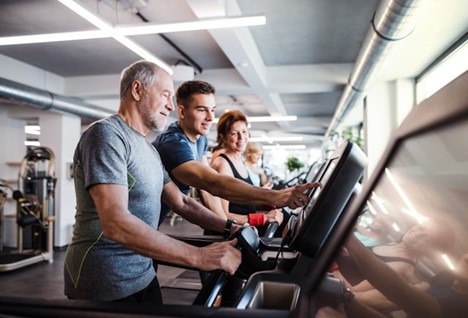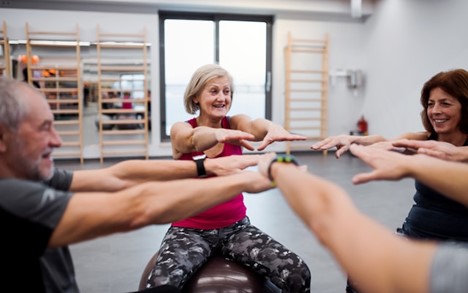Maintaining physical fitness is crucial for seniors, offering numerous benefits such as improved mobility, increased strength, and better overall health. However, to ensure that seniors are gaining these benefits, it’s essential to monitor and measure progress effectively. John Telesca of Port Chester says that this not only helps in tailoring exercises to individual needs but also in keeping seniors motivated by showcasing their achievements.
Importance of Monitoring Progress
Measuring progress in senior fitness programs serves several critical purposes:
- Personalization: Tracking progress helps in personalizing fitness routines based on individual capabilities and goals. This ensures that each senior gets the most out of their exercise regimen.
- Motivation: Seeing tangible results can be a significant motivator for seniors. Regular assessments can boost their confidence and encourage them to stay committed to their fitness goals.
- Safety: Monitoring helps in identifying any signs of overexertion or potential injuries. Adjusting exercises based on progress can prevent strain and ensure safe practice.
- Effectiveness: Regularly measuring progress helps in evaluating the effectiveness of the fitness program. It allows for necessary adjustments to maximize benefits and outcomes.
Key Metrics in Senior Fitness Programs
To comprehensively assess the progress of seniors in fitness programs, a variety of metrics should be monitored:
- Strength: Measuring improvements in muscle strength can be done through simple tests like grip strength measurements, weightlifting capabilities, and the ability to perform bodyweight exercises such as squats or push-ups.
- Mobility: Assessing mobility can involve tests for flexibility, range of motion, and gait analysis. Common tests include the sit-and-reach test for flexibility and the Timed Up and Go (TUG) test for mobility and balance.
- Endurance: Cardiovascular endurance can be evaluated through walking or cycling tests. The 6-minute walk test (6MWT) is a popular method for measuring endurance in older individuals.
- Balance: Balance can be assessed using tests such as the Berg Balance Scale, which evaluates a person’s ability to maintain stability during various activities.
- Body Composition: Monitoring changes in body composition, such as body mass index (BMI), muscle mass, and fat percentage, provides insights into overall fitness and health improvements.
- Mental Well-being: Fitness programs also positively impact mental health. Tracking psychological metrics such as mood, stress levels, and cognitive function can be valuable.
Tools and Techniques
Several tools and techniques can be employed to monitor and measure progress in senior fitness programs:
- Fitness Assessments: Regular fitness assessments by trained professionals can provide detailed insights into strength, mobility, balance, and endurance. These assessments should be conducted periodically to track changes and adjust fitness plans accordingly.
- Wearable Technology: Devices such as fitness trackers and smartwatches can help monitor various metrics, including steps taken, heart rate, and calories burned. These devices provide real-time data, making it easier to track progress daily.
- Exercise Logs: Keeping an exercise log can help seniors and their trainers track workout routines, intensity, and duration. Reviewing these logs can highlight progress and areas needing improvement.
- Apps and Software: Various apps and software are designed specifically for senior fitness monitoring. These tools can help track progress, set goals, and provide reminders for exercises.
- Regular Check-ins: Regular check-ins with fitness trainers or physical therapists can help in assessing progress and making necessary adjustments to the fitness program.

Tips for Effective Fitness Measurements
- Set Realistic Goals: Establishing realistic, achievable goals is crucial for motivation and progress. Goals should be specific, measurable, attainable, relevant, and time-bound (SMART).
- Consistency: Regular monitoring is key to tracking progress effectively. Consistent assessments allow for accurate measurement and timely adjustments.
- Involve Seniors: Engaging seniors in the monitoring process can enhance their motivation and adherence to the program. Educating them about the importance of tracking progress and involving them in setting goals can be beneficial.
- Celebrate Milestones: Recognizing and celebrating milestones can boost morale and encourage continued effort. Small achievements should be acknowledged to maintain motivation.
- Adjust Accordingly: Based on the monitored data, adjustments should be made to the fitness program to align with the senior’s progress and needs. This ensures continued improvement and prevents plateauing.
Conclusion
Monitoring and measuring progress in senior fitness programs is vital for ensuring safety, effectiveness, and motivation. By using a combination of assessments, technology, and regular check-ins, seniors can achieve their fitness goals and improve their overall health and well-being. Tailoring fitness programs based on monitored progress not only enhances physical capabilities but also boosts confidence and promotes a positive outlook on health and fitness.
